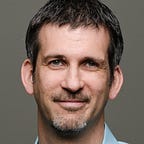Upstreaming Health
A new course reconsiders the systems affecting people’s health
What connects food insecurity to surging demand for talent at Bay Area tech companies? Why do food manufacturer lobbyists in Washington affect what’s for lunch in California more than nearby growers? And why does the Stanford Business School offer a healthier dining experience than the Med School?
These are the kinds of questions uncovered and explored by student teams this spring in a new d.school course called “Upstreaming Health.” The course, which brought together a diverse group of students, including undergraduates pursuing computer science, sustainability studies, and human biology; graduate students pursuing an MBA; Distinguished Career Institute (DCI) fellows; and Medical School postdocs, was premised on the idea that people’s health is the result of a complex interplay among many factors, ranging from the very personal to the national and planetary levels.
The course, which was cross-listed between the Stanford d.school and Human Biology, grew out of a partnership among Prof. Sara Singer, a professor of Medicine and (by courtesy) Business, and whose work focuses on organizational, cultural, and systemic causes and solutions for complex problems in health and health care, Joanne Cheung, a designer who recently led the systems design practice at IDEO, and Steve Downs, a co-founder at Building H, a nonprofit that focuses on building health into everyday life. Downs and Cheung had collaborated on a project at IDEO, called First Mile Health. Singer and Downs are collaborators on the Building H Index, a project that rates and ranks the impact that everyday products and services like Netflix, Uber and DoorDash have on the health of their users. The team was supported by Annie Minondo, a student in Stanford’s Sustainability program.
During the course, students participated in three projects that helped them see health in a systems context. The first was personal: they each created a collage that described their “health neighborhoods” — the elements in their lives that influence their own health. Students identified influences such as their friends, academic stressors, sleep, favorite foods, family culture, and many other factors that don’t typically get asked about in a doctor’s visit.
The second project focused on campus and explored the role of place in shaping behavior. Pairs of students recorded observational data at different places on campus and then posted their analyses, as infographics, at the locations they observed. One team’s analysis found that the GSB dining experience included healthier foods, more shared seating, and a less rushed experience than the Medical School dining hall, an awkward irony given the Med school’s role in training health professionals. Observing a public space that didn’t seem to attract many students, another team brought chalk to a fountain and kicked off a stream of spontaneous sharing of emotional messages.
The final project had students explore the food system, a key driver of health, through the lenses of different Bay Area organizations that engage with food in different ways. A team working with Ecumenical Hunger program, an East Palo food pantry, dug into the question of food insecurity and learned that growth of area tech firms had increased demand for nearby housing, causing rents to increase and forcing many residents to seek food assistance. Thinking upstream led to the insight that food doesn’t solve hunger, but affordable housing may. Another team worked with Eat REAL, a nonprofit that strives to improve the quality of school meals in California. As this team considered factors upstream in the system, they began to understand that federal regulations that affect school meals have often been tailored to suit the production capabilities of the large food manufacturers, sacrificing food quality in the process.
Complementing the projects, readings and lectures tackled what makes people healthy, the evolutionary biology perspective on health and modern life, designing for systems, the food system, planetary health, and strategies for social change.
The final deliverable for the food system project required that student groups present their findings not in a paper or PowerPoint deck but rather in the form of a “zine,” drawing from the style of self-published, small circulation magazines popular in the 60s and 70s. This format led to creative juxtapositions of charts, photos, handwritten diagrams, and passionate declarations. There were even some creative uses of fold-out pages and other structural innovations. All of the zines produced by the class are now being added to the Little Maga/Zine collection of the San Francisco Public Library.
One thing the course did not ask students to do was to develop solutions for the systems challenges they explored. The systems in which the problems lie are complex and don’t lend themselves to simple resolution. Students were instead challenged to look for leverage points within the systems that could influence potential solutions. These leverage points could take the form of new product designs, public policy changes, or even the public perceptions of the issue or the mindsets behind those perceptions. In that sense, by encouraging future scientists, designers, entrepreneurs, and other leaders to see health holistically, as a complex system, the course is itself an intervention in the system.
